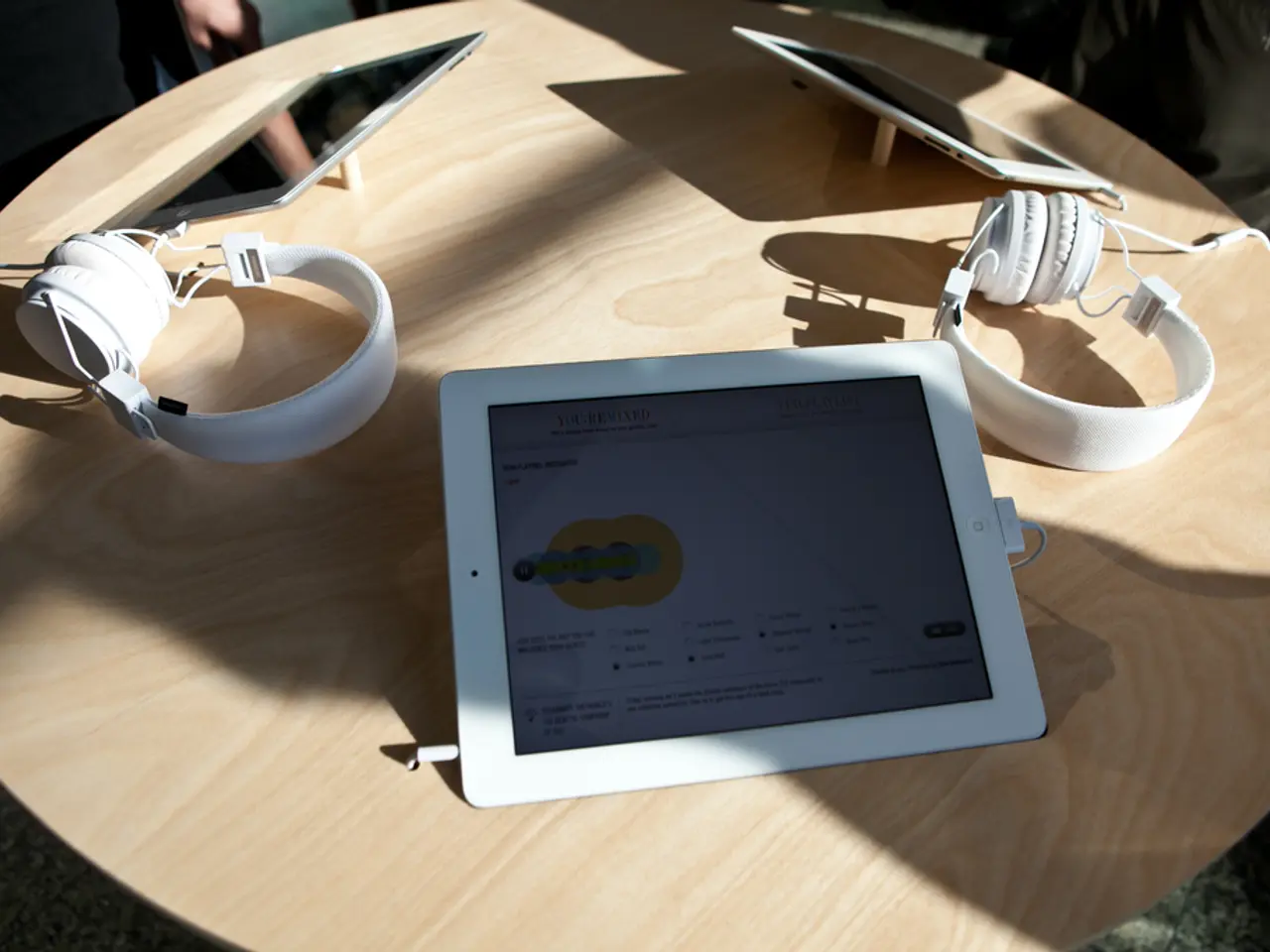Sensory Internet: The Imminent Revolution in Data Transmission through Touch-Based Technology
=========================================================================================================
The Tactile Internet, a groundbreaking technology, is poised to revolutionise various sectors by enabling near-instantaneous, real-time transmission of touch and haptic information over communication networks. This innovative system boasts key characteristics such as ultra-low latency, ultra-high reliability, and high availability, making it ideal for tactile interactions that require instantaneous feedback, like remote control of robots and real-time human-machine interaction.
Technical Foundation
The Tactile Internet leverages advancements in 5G and beyond 5G (6G) communication networks, particularly focusing on Ultra-Reliable Low Latency Communication (uRLLC). uRLLC offers extremely low delays (under 1 millisecond) and very high availability (99.999%+), essential for tactile feedback systems to operate smoothly and safely. Moreover, it integrates edge computing to bring computation closer to users, further reducing latency.
Data-driven methods and machine learning, including deep learning, GANs, and reinforcement learning, are being applied to improve tactile sensing and simulate complex tactile sensor behaviours for robotics and virtual environments. Biomimicry-inspired sensor designs and active inference models enable robots and systems to perceive textures, shapes, and forces, closely mimicking human touch.
Application Domains
The Tactile Internet's potential applications span across multiple domains. In robotics, it enables teleoperation, robot manipulation, and human-robot interaction where robots "feel" and manipulate objects with tactile sensing. Healthcare benefits from remote surgery and rehabilitation involving haptic feedback, while industrial automation gains from precise machine control and quality inspection. Virtual and augmented reality (VR/AR) experiences are enhanced, and agriculture and smart manufacturing also benefit from tactile sensing and control.
Technical Challenges
Despite its promising potential, the Tactile Internet faces technical hurdles. Achieving ultra-low latency and ultra-high reliability consistently over wireless networks remains challenging. Data integrity and security risks are critical, as tactile systems rely on vast amounts of real-time sensor data prone to poisoning, spoofing, or tampering, which could lead to unsafe system behaviour. Simulating and modelling tactile sensors accurately demands advanced data-driven and physics-based methods, which are computationally intensive and require large-scale datasets. Designing soft robotic materials and sensors that combine sensitivity and durability is an ongoing material science challenge.
Standardization Efforts and Future Outlook
Current efforts are directed towards integrating tactile internet requirements into 5G and future 6G standards, with continued research on network slicing, QoS, and edge computing to support uRLLC and tactile use cases. Cybersecurity frameworks are evolving to secure tactile internet applications, especially in critical infrastructure and autonomous systems. Research prototypes continue to improve tactile sensing hardware and software integration, with increasing adoption of biomimetic designs and AI-driven perception.
The Tactile Internet is anticipated to become a foundational technology for next-generation cyber-physical systems and IoT ecosystems, driving advanced human-machine symbiosis and autonomous operations. Research groups are working on developing standardized haptic codecs that can accurately represent force, texture, temperature, and other tactile parameters while minimizing data bandwidth. A distributed architecture with multiple edge computing nodes is necessary for the Tactile Internet, and the development of new transport protocols and advanced caching mechanisms for tactile data is ongoing.
The Tactile Internet's future will likely see expansive application across robotics, healthcare, industrial automation, and immersive media, fundamentally transforming interaction paradigms. Early implementations are expected in controlled environments like factory floors and specialized medical facilities by 2023-2025. The Tactile Internet is expected to unfold over the next decade, with gaming, remote surgery, and advanced teleoperation and remote maintenance of industrial equipment among its potential applications.
- The ultra-high reliability and ultralow latency of the Tactile Internet make it suitable for encryption of haptic information in various sectors like telemedicine and robotics to ensure data security.
- In data-driven education, the Tactile Internet could be employed to develop simulations for tactile sensor learning in technology programs, fostering a deeper understanding of network and cloud computing concepts.
- To address data integrity concerns related to the Tactile Internet, implementing blockchain technology, a decentralized digital ledger, can ensure the authenticity, integrity, and security of tactile information across the network.
- Technological advancements in the field of data-and-cloud-computing have been aimed at building efficient storage and processing solutions to handle the vast amounts of data generated by the Tactile Internet.
- Integrating the Tactile Internet into the internet-of-things (IoT) ecosystem calls for exploring new methods of data management, such as edge computing and advanced caching mechanisms, to facilitate real-time tactile interactions and reduce network congestion.




